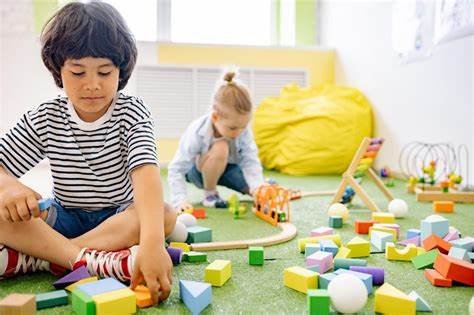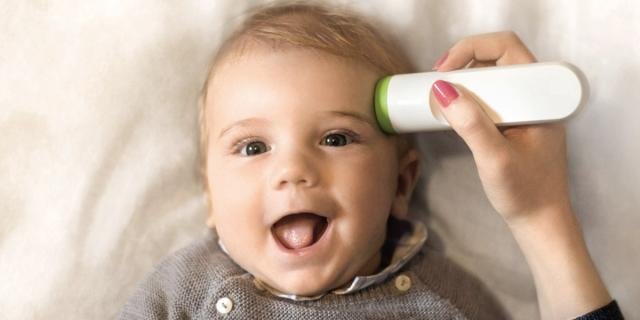A baby’s first smile is a milestone that fills parents with joy and pride. It’s not just an adorable moment, but it also marks an important step in a baby’s development. Understanding the science behind that first smile reveals a fascinating process that involves not just emotion but also neurological and social development. Here’s what you need to know about the science behind your baby’s first smile.

When Does a Baby Smile for the First Time?
Most babies begin to smile in response to external stimuli around six to eight weeks of age. However, this first smile is often considered a social milestone and usually occurs a little later, around two months. At this point, babies are starting to engage more with their caregivers and the world around them. While babies may exhibit reflexive smiles earlier, these aren’t “social smiles” but rather involuntary reactions to internal stimuli, such as gas or a peaceful nap.
The Reflexive Smile: The Early Stages
In the first few weeks of life, babies often smile in response to internal sensations, such as when they feel content or during sleep. This reflexive smile occurs when the muscles around the mouth contract, but it is not a social gesture. Babies are still developing their motor skills and have not yet learned to associate smiling with interaction. These early smiles are more about the baby’s physical response to feeling comfortable or experiencing pleasure.
The Emergence of Social Smiles
Around six to eight weeks, babies begin to exhibit the social smile, which is a significant developmental leap. This type of smile is intentional and is used as a form of communication. Babies start to respond to their caregivers’ facial expressions and voices, signaling their awareness of their surroundings and social bonds. When a baby looks at a parent or caregiver and smiles, it is a sign of social connection and emotional growth. This smiling is a precursor to bonding and often elicits positive reactions from adults, creating a loop of emotional exchange.
The Role of the Brain in Smiling
The brain plays a critical role in a baby’s ability to smile. During the early months, the baby’s brain is rapidly developing, with neural pathways forming that enable the baby to process emotions and stimuli. The cerebral cortex, which is responsible for processing sensory input and emotional responses, is actively involved in this process. The brain’s limbic system, which controls emotions, is also integral to the baby’s ability to respond socially. As the baby’s brain matures, it becomes better at recognizing familiar faces, sounds, and emotional cues, leading to more deliberate social smiles.
The Impact of Caregiver Interaction
Babies are naturally social beings, and they rely on interaction with their caregivers to develop their emotional and social skills. When parents, siblings, or caregivers smile at the baby, it reinforces the concept that smiling is a way to connect. Babies are keen observers and quickly learn to mimic facial expressions. Positive reinforcement from caregivers, such as responding to a smile with warmth and affection, encourages the baby to smile more. This cycle helps strengthen the emotional bond between the baby and the parent, contributing to the baby’s overall sense of security and attachment.
The Development of Emotional Expression
A baby’s first smile is a significant milestone in emotional development. It represents the beginning of their ability to express joy, interest, and pleasure. As babies grow, they become more skilled at using their facial expressions to communicate different emotions. Smiling is just the first step. Over time, babies will learn to express a wider range of emotions, including happiness, surprise, and even discomfort. The first smile often sparks a sense of connection between the baby and their caregivers, reinforcing emotional development and social interaction.
The Influence of Genetics and Environment
The timing and frequency of a baby’s first smile can vary, influenced by both genetic factors and environmental interactions. Some babies may smile earlier, while others may take a bit longer. Genetics play a role in the baby’s temperament and general emotional responses, but the environment—particularly the level of caregiver interaction—is also crucial. Babies who are exposed to a nurturing, responsive environment are likely to smile sooner and more often. Caregiver responsiveness helps babies feel secure, which is key to developing social smiles and engaging in positive interactions.
Encouraging the First Smile
Parents and caregivers can encourage their baby’s first smile by providing a warm and engaging environment. Smiling at your baby, speaking softly, and maintaining eye contact helps to create a connection and encourage social responsiveness. Playful interactions, such as making funny faces or gently cooing, also capture the baby’s attention and prompt a smile. Additionally, ensuring that the baby is well-rested, fed, and comfortable can also increase the likelihood of seeing that precious first smile.
Conclusion
A baby’s first smile is not just a fleeting moment of cuteness—it’s a key developmental milestone. This smile signifies growth in the baby’s emotional, social, and neurological development. By understanding the science behind it, we can appreciate how complex and remarkable this simple expression truly is. As the baby’s brain matures and they begin to engage with the world around them, smiles become a powerful tool for connection, communication, and emotional expression. It’s a beautiful reminder of how quickly babies develop and how important human interaction is in shaping their growth.










